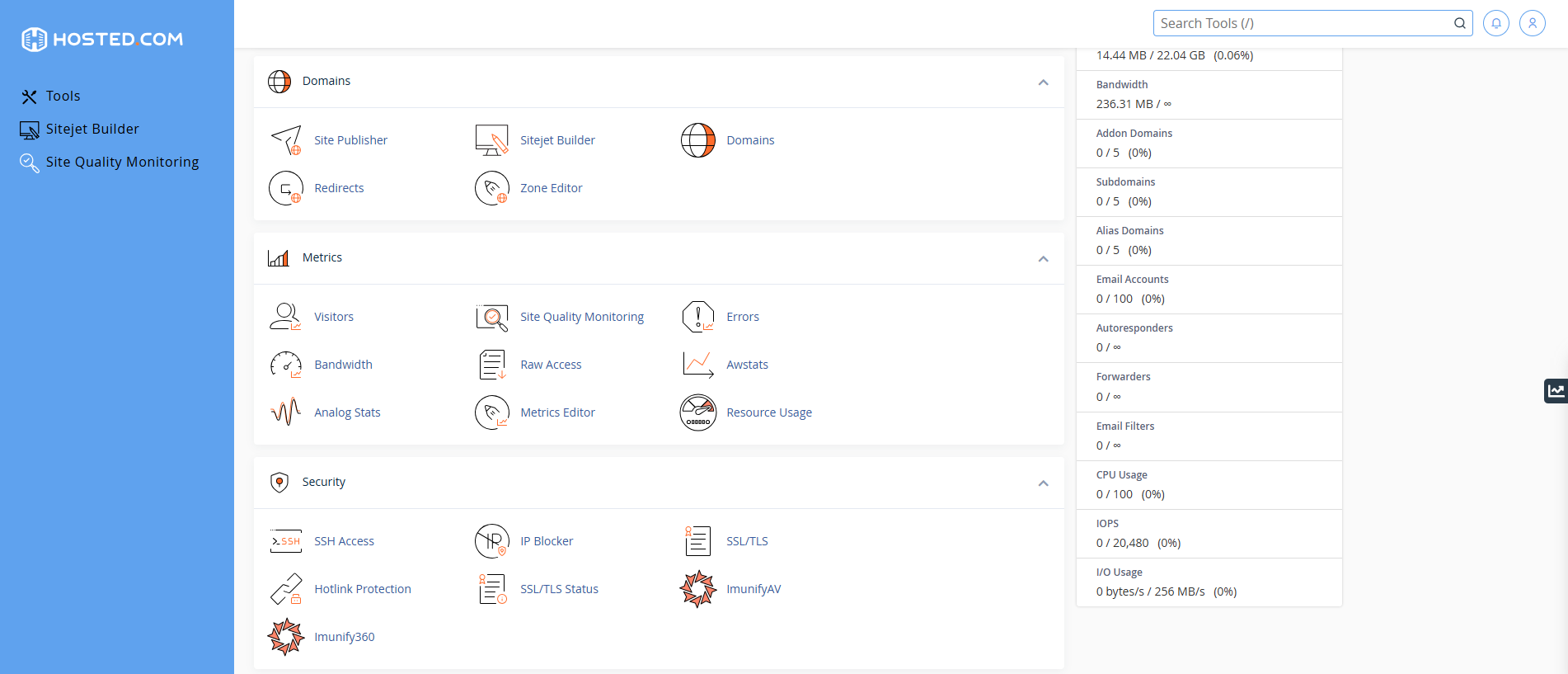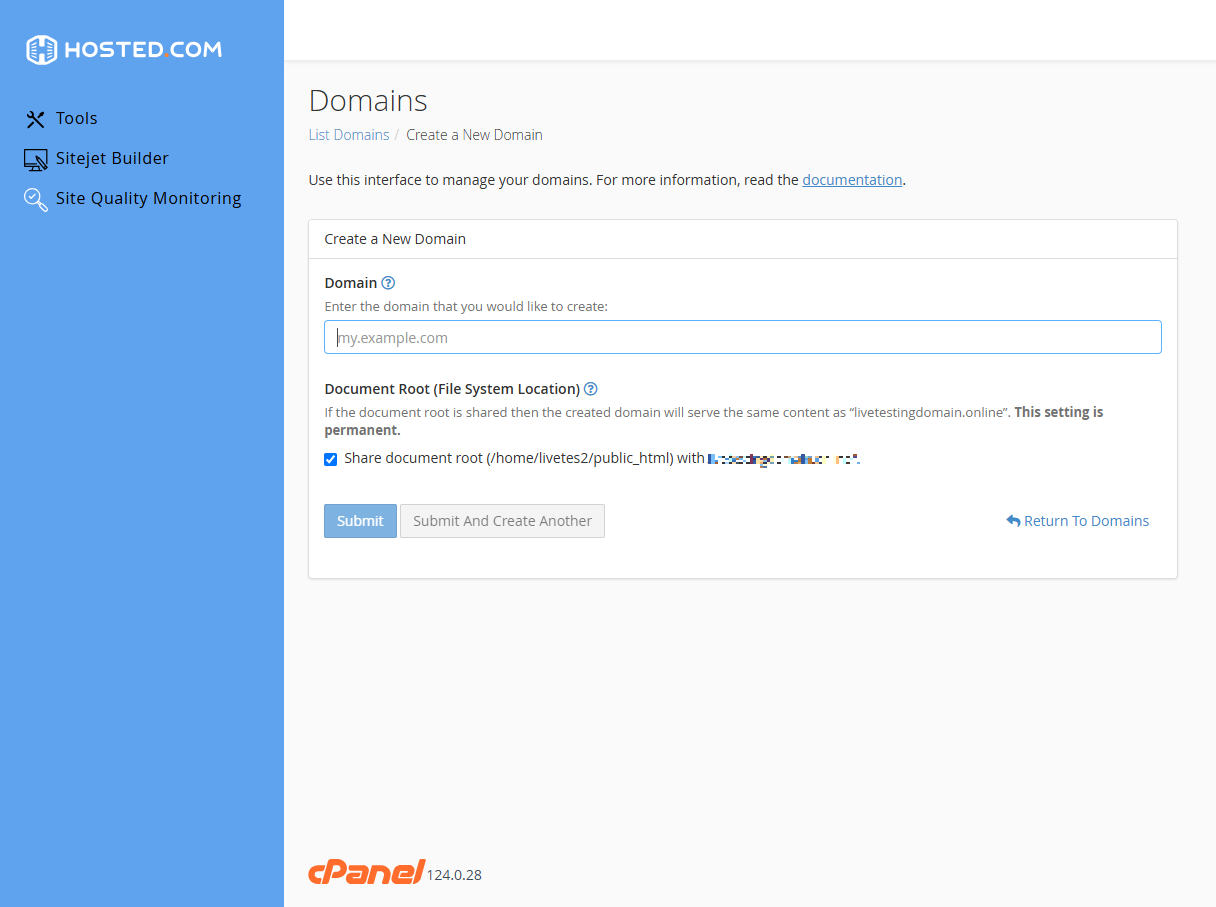When you park a domain, you can link additional domain names to your main website without requiring separate installations. This functionality especially benefits businesses or individuals who want to secure domain names or channel traffic from various sub-domains to a single site. This tutorial provides a step-by-step guide on how to park a domain using cPanel.
TABLE OF CONTENTS
How to Park A Domain in cPanel
Parking a domain is useful when you have additional domain names you want visitors to use to reach your website. This guide assumes you are already logged into your cPanel account’s dashboard via the Hosted.com® Client Portal.

1. Select Domains found under the Domains section on your cPanel dashboard.

2. Enter the new domain name you want to park in the specified field, then click Add Domain.
Once the domain is added, any user accessing the parked domain (e.g., mybiz123.info) will be automatically redirected to your primary domain (e.g., mybiz123.com).

3. Check that the DNS settings for your parked domain correspond with those of your primary domain. The redirection may not work correctly if there is an error or typo.
4. You can view all parked domains linked to your account in the Manage Parked Domains section. You can add or remove these parked domains as necessary.
Additional Information
How Domain Parking Works
Domain parking refers to registering a domain name without being connected to services like email or a website. This is usually done to reserve the domain name for future development and prevent the risk of cybersquatting.
Individuals or businesses may register a domain name for future projects or websites. By parking it, they secure the domain, preventing others from acquiring it and ensuring it’s available when needed. When you park a domain, the process is as follows:
- Registration: The domain owner registers the domain name through a provider.
- Name Servers: The provider sets up name servers for the domain, which controls how it functions.
- Parking: Instead of pointing the domain to a website, the owner uses the provider’s or a third-party parking service’s name servers.
Advantages of Domain Parking
- Brand Protection: Parking domains safeguard your brand by preventing competitors from obtaining similar domain names.
- Traffic Management: It enables redirecting traffic from various domains to a single website, ensuring visitors can access your content despite the domain they use.
- Future Planning: You can hold domains for prospective projects without immediately creating a separate website.
Additionally, cybersquatters often register domains that closely resemble established brands or trademarks with the intent to sell them back at a profit to their rightful owners. Parking a domain helps prevent this practice.
Important Considerations
- Domain Registration: Verify that any domain you intend to park is registered and active before parking it in cPanel.
- DNS Propagation: Following the configuration of a parked domain, there may be a delay in DNS (Domain Name System) changes throughout the internet, which can influence the speed at which users can reach your parked domain.
- Restrictions: Be mindful of any restrictions your hosting provider has set concerning the number of parked domains permitted under a single account.
Nameservers Explained
Nameservers translate human-readable domain names (e.g., example.com) into numerical IP addresses that computers use to access websites. They act as directories, storing records that map domain names to IP addresses and other data.
When a visitor types a domain name into their browser, a DNS resolver queries nameservers, ultimately reaching the authoritative nameserver, which provides the necessary IP address for their computer to connect to the correct web server hosting the website.




















